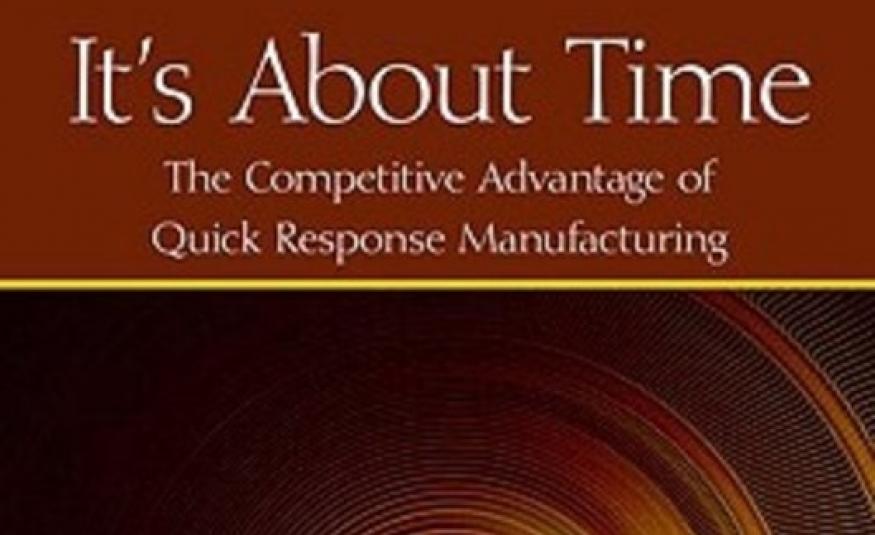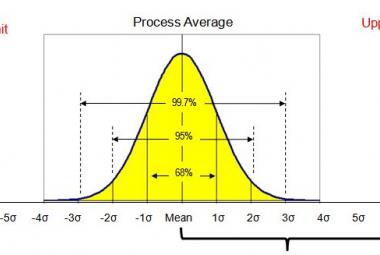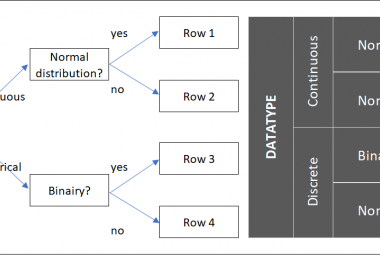In his book It´s about time, Rajan Suri discusses the power of the lean philosophy: focusing on reducing the lead time. A little confusing to me, is that he uses different words to describe the same principles as other authors do when they describe lean. Suri describes Manufacturing Critical Time (MCT) instead of lead time, and Quick Response Manufacturing as a new method that come very close to simply implementing the pull principle.
For me, the most interesting parts of this book include the formulas Suri describes to calculate the link between lead time reduction and costs, the 4structural changes that are necessary to become a lean organization, a detailed description of the POLCA principle and a formula that describes the link between the utilization of a resource and waiting times.
Suri describes the POWER OF SIX RULE to calculate cost reductions based on lead time reductions.
This rule describes the relationship between MR and CR as follows: MR = (CR)6. Or CR = (MR)1/6 Important to note is, that this is a rule of thumb formula, which means actual cost reductions depend on the situation.
MR is the MCT ratio of the process. This means we calculate the ratio between the (expected) improved MCT and the (old) current MCT.
CR is the Cost Ratio, which describes the ratio between the (expected) improved costs of a product and the (old) current costs.
Let us first look at an example in which the formula is used to calculate the cost reduction after a lead time improvement. Let´s assume, the lead time was reduced from 10 to 6 hours. This leads to a MR value of (6/10) = 0.6. We can now calculate the cost reduction as (0.6)1/6 = 0.92, or 92%. This means the cost reduction is 100%-92% = 8%.
The other way around, we can calculate a lead time reduction goal when there is a cost reduction target. Let´s assume, the cost reduction target of a process is 15%. MR = (0.85)6 gives us 0.38, or 38%, which means the lead time should be reduced with 100%-38%= 62% to achieve the targeted cost reduction.
Now that we know that we can reduce costs by reducing lead times, Suri describes 4 STRUCTURAL CHANGES to achieve this reduction in lead times.
On organizational level, tasks should be organized in work cells instead of functional departments. Within every multifunctional cell, a series of tasks needed for 1 order is performed without stopping.
On management level, ownership needs to be transferred to the work cells. They themselves can plan their tasks and solve most of their problems using the PDCA cycle. They need less overhead now that they are a cross functional team.
On team level, cross training is of high importance to be able to reassign the tasks within the work cell team. When there used to be 12 different people from 12 departments working on one order, it does not mean the work cell needs 12 people to perform the same tasks. Maybe the team can be cross trained in such a way, that only 3 or 4 people do all the work on one order.
Finally, on a cultural level, lean thinking is important. The entire team should continuously put effort in reducing the lead time of a process. A possible KPI for the lead time is what Suri calls the QRM number that expresses a reduction of lead-time in a positive way: the ratio between the old and the new lead time, multiplied by 100.
An interesting detail that is described in Suri´s book, is the principle of PAIRED-CELL OVERLAPPING LOOPS OF CARDS WITH AUTHORIZATION (POLCA). This system of cards brings the traditional kanban system to a whole new level. POLCA is developed for a high variance, low volume environment. When different orders follow different routes through the organization, POLCA can be used.
A work cell can plan their own work using 3 POLCA rules. First, the material to work on the order needs to be available. Second, the order needs to be authorized for production start. Third, the POLCA card needs to be at the cell.
Every combination of 2 cells has their own POLCA card, hence the word paired loop. This means, that station A can deliver products to workstation B, C and D, while having three different types of POLCA cards, one for each of the internal customer. The sequence in which station A works on the orders is based on the rules described above.
The main difference between kanban and POLCA, is that POLCA is a capacity signal and kanban an inventory signal. A kanban card can be brought to workstation A as soon as there is a free slot in a supermarket (hence inventory), whereas with POLCA, workstation A would only receive a production order when another workstation actually needs the product right away.
Finally, I like how Suri describes the importance of the UTILIZATION PERCENTAGE. In our private life, we all know examples of long lines at the casher at the supermarket when the cashier is very busy. We also know the examples of being stuck in a traffic jam, when the roads are very full. However, most of us do not realize, that similar waiting times exist when we over utilize a machine or a person at the office. A simple task in the office will also end up at the end of the traffic jam or the line at the cashier, with prolonged lead times as a result.
Suri suggest, a person or a machine should be planned to maximum 85% of its capacity and in some cases even 75%, to prevent waiting times at critical process steps.
To calculate the current utilization rates, make sure to include set-up times, break down times, autonomous maintenance times and of course the production time itself.
The impact of the utilization on the lead time can be calculated with the formula: M = U / (1-U) in which M is the Multiplier effect caused by the Utilization U. A utilization of 75% would lead to an M factor 3 and a 90% utilization to an M factor 9. This means, that by increasing the utilization with 15%, you actually triple the waiting times in front of that resource.
Another interesting way of looking at the data is calculating the available capacity. How often can an unexpected task be worked on by a colleague without waiting time? This tells us something about the utilization of the person´s capacity, and a lot about the flexibility of the organization.
The title of the book describes exactly what the main message of the book is: it´s about time. Everything has to do with lead time. The shorter the lead time, the more flexible the organization can respond to customer demand. This is true in manufacturing, but definitely also in indirect processes, where the speed in which a new machine or product is developed should be reduced, or the speed in which suppliers deliver new parts.
Because Suri teaches us how to calculate the waiting times and offers a formula to link lead times to costs, this book is a valuable read for everybody who likes measure the impact of lean.
Continue to:
Creating a Lean R&D System - T.M.Barnhart (summary)
REFERENCE:
Suri, R. (2010). It´s about Time - The Competitive Advantage of Quick Response Manufacturing. Boca Raton: CRC Press. (order this book)












